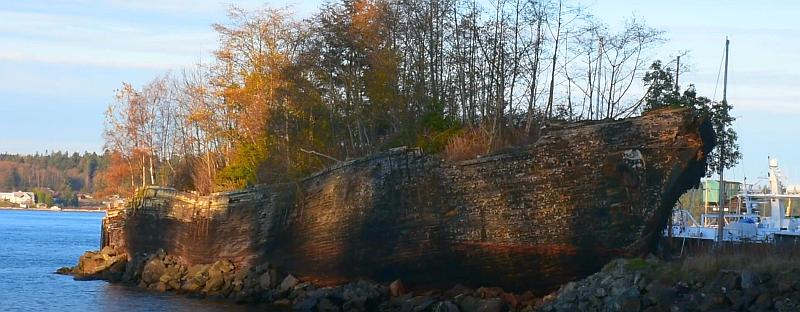 Last September, we posted about the wreck of the steam collier SS Ayrfield, abandoned in Homebush Bay, near Sydney, Australia, before it could be scrapped, that has now been taken over by a mangrove forest. A reader pointed out a similar vessel on the other side of the globe that has also been taken over by nature. The four-masted auxiliary schooner La Merced, built in 1917, is now a breakwater at a marina in Anacortes, WA. The schooner’s hull is also home to a small forest of trees.
Last September, we posted about the wreck of the steam collier SS Ayrfield, abandoned in Homebush Bay, near Sydney, Australia, before it could be scrapped, that has now been taken over by a mangrove forest. A reader pointed out a similar vessel on the other side of the globe that has also been taken over by nature. The four-masted auxiliary schooner La Merced, built in 1917, is now a breakwater at a marina in Anacortes, WA. The schooner’s hull is also home to a small forest of trees.
 For more than a decade the Navy has labored to develop a workable rail gun, a futuristic weapon that fires projectiles at up to seven times the speed of sound using electricity. It failed.
For more than a decade the Navy has labored to develop a workable rail gun, a futuristic weapon that fires projectiles at up to seven times the speed of sound using electricity. It failed.
The Washington Post quotes Matthew Caris, a defense analyst at Avascent Group, a consulting firm saying “The railgun is, for the moment, dead.”
All told, the Navy spent about $500 million on research and development, according to Bryan Clark, an analyst at the Hudson Institute. Now, the Navy has cut funding for railgun research from its latest budget proposal. The Defense Department is turning its attention to hypersonic missiles to keep up with China and Russia.
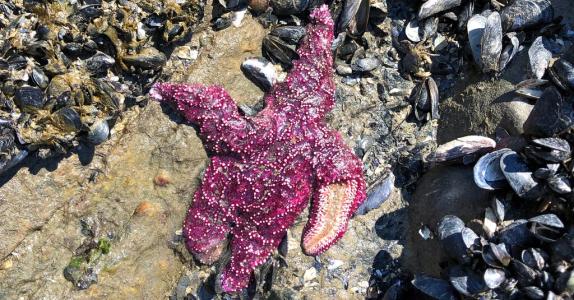
A dead sea star in West Vancouver, British Columbia. Photo: Christopher Harley/University of British Columbia
The recent heat wave in the Pacific Northwest and Canada has proven deadly. The death toll from the record-breaking heatwave that struck the US Pacific Northwest last week has risen to nearly 200. British Columbia reported at least 719 people suffered “sudden and unexpected deaths,” three times more than what would normally occur in the province during a seven-day period. The impact on coastal sea life has also been devastating.
The New York Times reports that the combination of extraordinary heat and drought that hit the Western United States and Canada over the past two weeks has killed hundreds of millions of marine animals and continues to threaten untold species in freshwater, according to a preliminary estimate and interviews with scientists.
“It just feels like one of those postapocalyptic movies,” said Christopher Harley, a marine biologist at the University of British Columbia who studies the effects of climate change on coastal marine ecosystems.
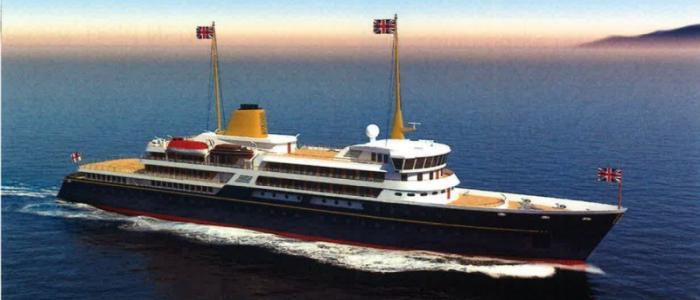 Last month, we posted that UK Prime Minister Boris Johnson has announced the construction of a new national flagship intended to promote British businesses around the world. So far the proposal to replace the royal yacht Britannia, has been greeted with very little enthusiasm. Even the royal family has voiced its displeasure with the idea.
Last month, we posted that UK Prime Minister Boris Johnson has announced the construction of a new national flagship intended to promote British businesses around the world. So far the proposal to replace the royal yacht Britannia, has been greeted with very little enthusiasm. Even the royal family has voiced its displeasure with the idea.
Supporters of the new flagship argue that it would pay for itself many times over by helping secure trade deals, military contracts, and private investment in Britain. Critics consider it to be an ill-conceived boondoggle.
 Congratulations to Captain William D. “Bill” Pinkney, who has been inducted into the National Sailing Hall of Fame with a Lifetime Achievement Award as an “Enthusiastic Trend Setter.” Captain Pinkney was the first African American to solo-circumnavigate the world via Cape Horn. Born on September 15, 1935, in Chicago, he attended public schools in Chicago and joined the U.S. Navy after graduating from high school in 1954.
Congratulations to Captain William D. “Bill” Pinkney, who has been inducted into the National Sailing Hall of Fame with a Lifetime Achievement Award as an “Enthusiastic Trend Setter.” Captain Pinkney was the first African American to solo-circumnavigate the world via Cape Horn. Born on September 15, 1935, in Chicago, he attended public schools in Chicago and joined the U.S. Navy after graduating from high school in 1954.
Pinkney’s voyage featured the rounding of the five great capes including Cape Horn. The 27,000 mile circumnavigation took 22 months and ended on June 9, 1992. Throughout the trip, Pinkney sent footage back to Globe TV and communicated with some 30,000 school children. The finished production titled, “The Incredible Voyage of Bill Pinkney,” won the George Foster Peabody Award for excellence in children’s television programming. The film has aired on the Disney Channel, National Geographic, and PBS stations and is now available on Youtube.
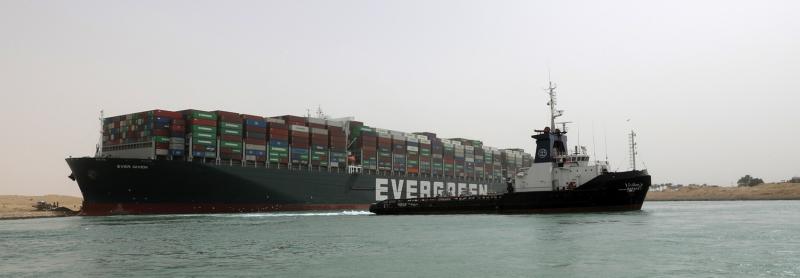 Reuters is reporting that an Egyptian court has lifted the detention order on the Ever Given container ship, allowing its expected release from the Suez Canal on Wednesday, according to a lawyer and judicial sources.
Reuters is reporting that an Egyptian court has lifted the detention order on the Ever Given container ship, allowing its expected release from the Suez Canal on Wednesday, according to a lawyer and judicial sources.
The Ever Given’s owners and insurers announced on Sunday that they had reached a settlement with the Suez Canal Authority (SCA) over compensation for the ship becoming grounded in March and blocking traffic in the waterway. The amount of the settlement has not been announced. The SCA initially demanded $916m in compensation to cover salvage efforts, reputational damage, and lost revenue. The demand was later lowered to $550 million.
Fifty-one years ago today, 100,000 people lined the banks of the River Avon in Bristol as the SS Great Britain returned to her birthplace. In the intervening years, the rusting hulk was meticulously restored to her former glory and now rests in the drydock where she was built. As a museum ship, she is visited by between 150,000 and 200,000 visitors annually. Here is an updated repost from several years ago about the grand old ship, followed by a video about her return to Bristol in 1970.
In the spring of 2016, I visited the museum ship SS Great Britain, in Bristol, UK. When she was launched in 1843, the iron-hulled luxury passenger steamship SS Great Britain was described as “the greatest experiment since the Creation.”
 An updated repost from several years ago, still fitting for the day.
An updated repost from several years ago, still fitting for the day.
Happy 4th of July! Those of us in the United States celebrate the anniversary of the adoption of the Declaration of Independence on July 4th 1776. Immediately after declaring independence from Great Britain, the representatives in the Continental Congress drank a toast with glasses of Madeira wine.
Why Madiera? It was virtually the only wine available in the American colonies at the time. Wine carried by sailing ship was often spoiled in transit by the constant jostling of the ship and the wide variations of heat and cold. Wine from the island of Madeira, however, was fortified with a small amount of sugar cane brandy to help it survive the ocean voyage. Not only did the fortified wine survive the voyage but it was found that the heat and motion of the ship actually improved the quality of the wine.
 Early Friday, bright orange flames boiled from the Gulf of Mexico off the Yucatan peninsula caused by a gas leak in an underwater pipeline. Resembling molten lava, the eruption of flames was dubbed an “eye of fire” on social media. The fire, near a Mexican state oil company Pemex drilling platform, burned for five hours before being fully extinguished.
Early Friday, bright orange flames boiled from the Gulf of Mexico off the Yucatan peninsula caused by a gas leak in an underwater pipeline. Resembling molten lava, the eruption of flames was dubbed an “eye of fire” on social media. The fire, near a Mexican state oil company Pemex drilling platform, burned for five hours before being fully extinguished.
The fire began in an underwater pipeline that connects to a platform at Pemex’s flagship Ku Maloob Zaap oil development, the company’s most important, four sources told Reuters.
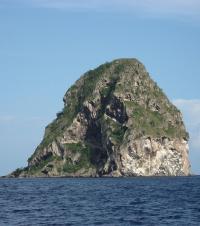
HMS Diamond Rock
As an American reading British Royal Navy history, I will admit to being initially confused, more than once, by “stone frigates“, naval establishments on land named as ships. HMS Collingwood, for example, is a stone frigate (shore establishment) of the Royal Navy, in Fareham, England. It is the lead establishment of the Maritime Warfare School.
Recently, I came across the history of the first “stone frigate,” HMS Diamond Rock of 1803. Diamond Rock is a 175-meter-high (574 ft) uninhabited basalt island located 3 kilometers from Pointe Diamant on the Caribbean island of Martinique. The rock gets its name from the reflections that its sides cast at certain hours of the day, which evoke images of a precious stone.
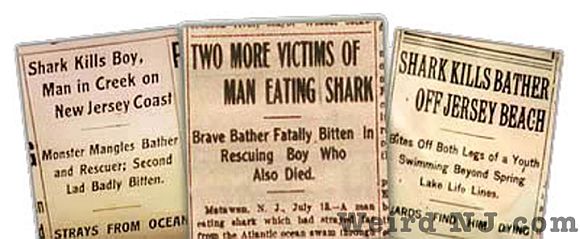 One hundred and five years ago today, Americans learned to be afraid of sharks. An updated repost.
One hundred and five years ago today, Americans learned to be afraid of sharks. An updated repost.
On the evening of July 1, 1916, Charles Vansant, 25, of Philadelphia was on vacation with his family at the beach-side resort town of Beach Haven on the New Jersey Shore. He decided to go for a swim before dinner. Shortly after he dove into the surf, he was attacked by a large shark and died of loss of blood.
Worse was yet to come. Five days later and 45 miles to the north in the resort town of Spring Lake, New Jersey, Charles Bruder, 27, a Swiss bell captain at a local hotel, was attacked and killed by a shark while swimming. The shark bit him in the abdomen and severed both his legs.
 The salvors attempting to cut up the shipwreck of the car-carrier Golden Ray have run into new problems. For the last seven months, the salvors have attempted to cut the ship up using a heavy-lift catamaran VB-10,000, nicknamed the “Golden Arches.” To make the cuts, the VB-10,000 hauls a heavy chain up through the steel hull. After delays related to equipment failures and most recently a significant fire, progress has again come to a near standstill as the chains have encountered thick structural brackets inside the hull.
The salvors attempting to cut up the shipwreck of the car-carrier Golden Ray have run into new problems. For the last seven months, the salvors have attempted to cut the ship up using a heavy-lift catamaran VB-10,000, nicknamed the “Golden Arches.” To make the cuts, the VB-10,000 hauls a heavy chain up through the steel hull. After delays related to equipment failures and most recently a significant fire, progress has again come to a near standstill as the chains have encountered thick structural brackets inside the hull.
The salvors have come up with a new plan — explosives, specifically, “low hazard flexible linear-shaped charges.” The Brunswick News quotes U.S. Coast Guardsman Michael Himes saying that the devices pack a certain amount of the explosive RDX inside a foam casing. The resulting charge delivers a precisely aimed blast that makes precise cuts through steel obstacles.
There will be some changes for anyone subscribing to the Old Salt Blog by email. We have been using Google’s Feedburner email feed, which, over the years, has worked more or less. Google, however, is discontinuing the Feedburner email feed in July, so we have switched to a new service, follow.it.
We are still figuring out the details and features of the new feed, so we beg for your indulgence and patience while we get things set up. Thanks.
This weekend four tall ships participated in the Tall Ships Festival that this year is a part of the Boothbay Harbor Windjammer Days which continues through July 2. Two of the tall ships, the privateer schooner Lynx and the schooner Spirit of Bermuda are commanded by captains named Peacock. The two captains happen to be father and son. Don Peacock is captain of the Lynx, while Captain Alex Peacock is at the helm of the Spirit of Bermuda. Alex represents the fifth generation of traditional ship sailors in the family. The two schooners and their father and son captains sailed in company from Nantucket to join in the festival.
Here is a short video about the father and son and the schooners they sail.
Father & son duo help bring the tall ships to Maine together
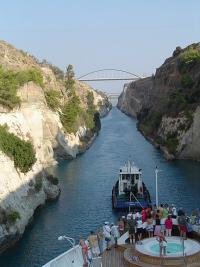 The Corinth Canal that connects the Gulf of Corinth in the Ionian Sea with the Saronic Gulf in the Aegean Sea, was closed by a landslide in January. It was recently announced that the canal will remain closed to marine traffic until the end of the summer 2021 season with a probable extension.
The Corinth Canal that connects the Gulf of Corinth in the Ionian Sea with the Saronic Gulf in the Aegean Sea, was closed by a landslide in January. It was recently announced that the canal will remain closed to marine traffic until the end of the summer 2021 season with a probable extension.
With the four-mile-long sea-level canal through the Isthmus of Corinth closed, vessels that would otherwise use the canal must travel 185 nautical miles around the Peloponnese.
The canal is too small for most modern cargo vessels with a maximum allowed beam of 58 feet and a maximum draft of 24 feet.
 In September 2020, we posted about the unveiling of an autonomous craft named Mayflower, after the Pilgrim’s ship of 1620. The post title posed the question, Autonomous Mayflower, Technological Breakthrough or Hazard to Navigation?
In September 2020, we posted about the unveiling of an autonomous craft named Mayflower, after the Pilgrim’s ship of 1620. The post title posed the question, Autonomous Mayflower, Technological Breakthrough or Hazard to Navigation?
Now that the 49-foot long trimaran has been towed back into port after completing only 10% of a planned transatlantic voyage, the question remains unanswered.
 Commodore David Hughes, believed to be the Royal Navy’s oldest veteran, has died, just shy of his 107th birthday. An excerpt from the obituary on the Royal Navy website:
Commodore David Hughes, believed to be the Royal Navy’s oldest veteran, has died, just shy of his 107th birthday. An excerpt from the obituary on the Royal Navy website:
The New Zealand-born officer was one of the last survivors of the Yalta Conference – where Churchill, Roosevelt, and Stalin drew up plans for post-war Europe – one of many remarkable moments in a 32-year naval career.
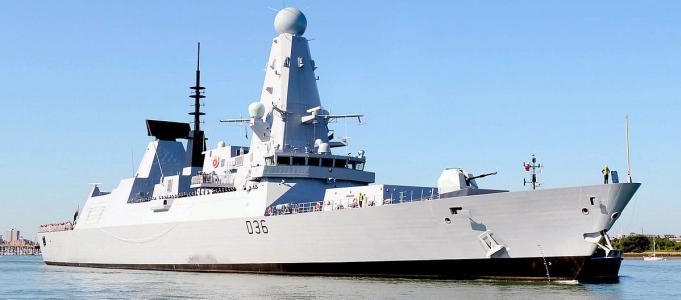 Yesterday, more than 20 Russian aircraft and two coastguard ships shadowed the Royal Navy destroyer, HMS Defender, sailing near Crimea. Moscow’s defence ministry said a patrol ship fired warning shots and a jet dropped bombs in the path of HMS Defender as it sailed some 12 miles (19km) off Crimea’s coast. The UK government rejected Russia’s account of the incident and denied that any warning shots had been fired.
Yesterday, more than 20 Russian aircraft and two coastguard ships shadowed the Royal Navy destroyer, HMS Defender, sailing near Crimea. Moscow’s defence ministry said a patrol ship fired warning shots and a jet dropped bombs in the path of HMS Defender as it sailed some 12 miles (19km) off Crimea’s coast. The UK government rejected Russia’s account of the incident and denied that any warning shots had been fired.
The BBC reports that HMS Defender was sailing from Odessa in southern Ukraine to Georgia. To get there, it passed south of the Crimea peninsula, which Russia annexed from Ukraine in 2014 in a move that has not been recognized internationally.
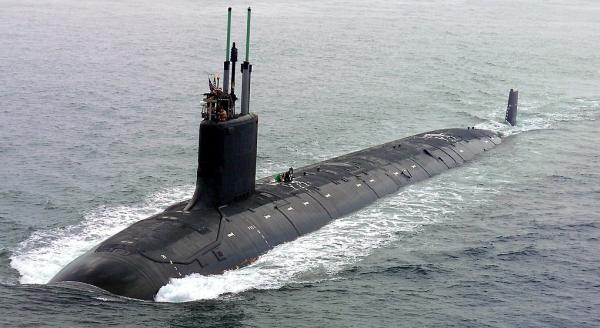 The US Navy is having a problem with its Virginia-class fast attack submarines. Secretary of the Navy Thomas Harker told the Senate Armed Services Committee that some parts are wearing out far faster than expected. The Navy has had to cannibalize hundreds of subs for working replacement parts.
The US Navy is having a problem with its Virginia-class fast attack submarines. Secretary of the Navy Thomas Harker told the Senate Armed Services Committee that some parts are wearing out far faster than expected. The Navy has had to cannibalize hundreds of subs for working replacement parts.
“There are parts on the Virginia class that we thought were going to be life-of-the-submarine parts, and they are failing more quickly than we originally envisioned,” Harker said, adding that the service’s sub crews and parts support are having to go back in and find replacement parts.
Bloomberg reports that the U.S. Navy has swapped more than 1,600 parts among its new Virginia-class submarines since 2013 to ease maintenance bottlenecks as components that are supposed to last 33 years wear out decades sooner.
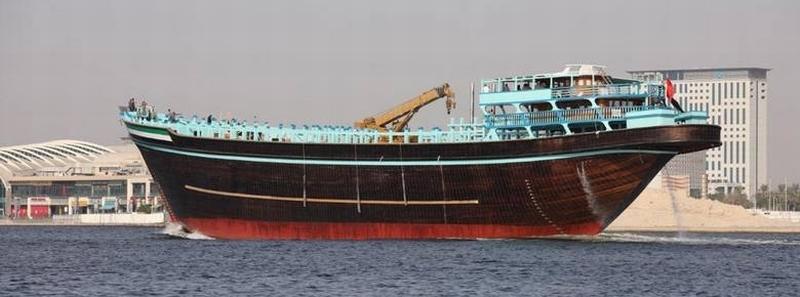
Dhow Obaid
Last October, the mightly dhow Obaid set sail from the Majid Obaid Bin Majid Al Falasi & Sons shipyard on Dubai Creek. The Guinness Book of World Records has confirmed Obaid as the largest wooden Arabic dhow in the world. It is also one of the largest wooden ships ever built.
The Obaid of 2020 brings to mind the schooner Wyoming of 1909, often referred to as the largest wooden ship ever built. Although the two vessels are separated in time by 111 years, they have much in common. Both were built primarily of wood with steel and iron for additional strength and both push the limits of how large a wooden ship can be practically built.
